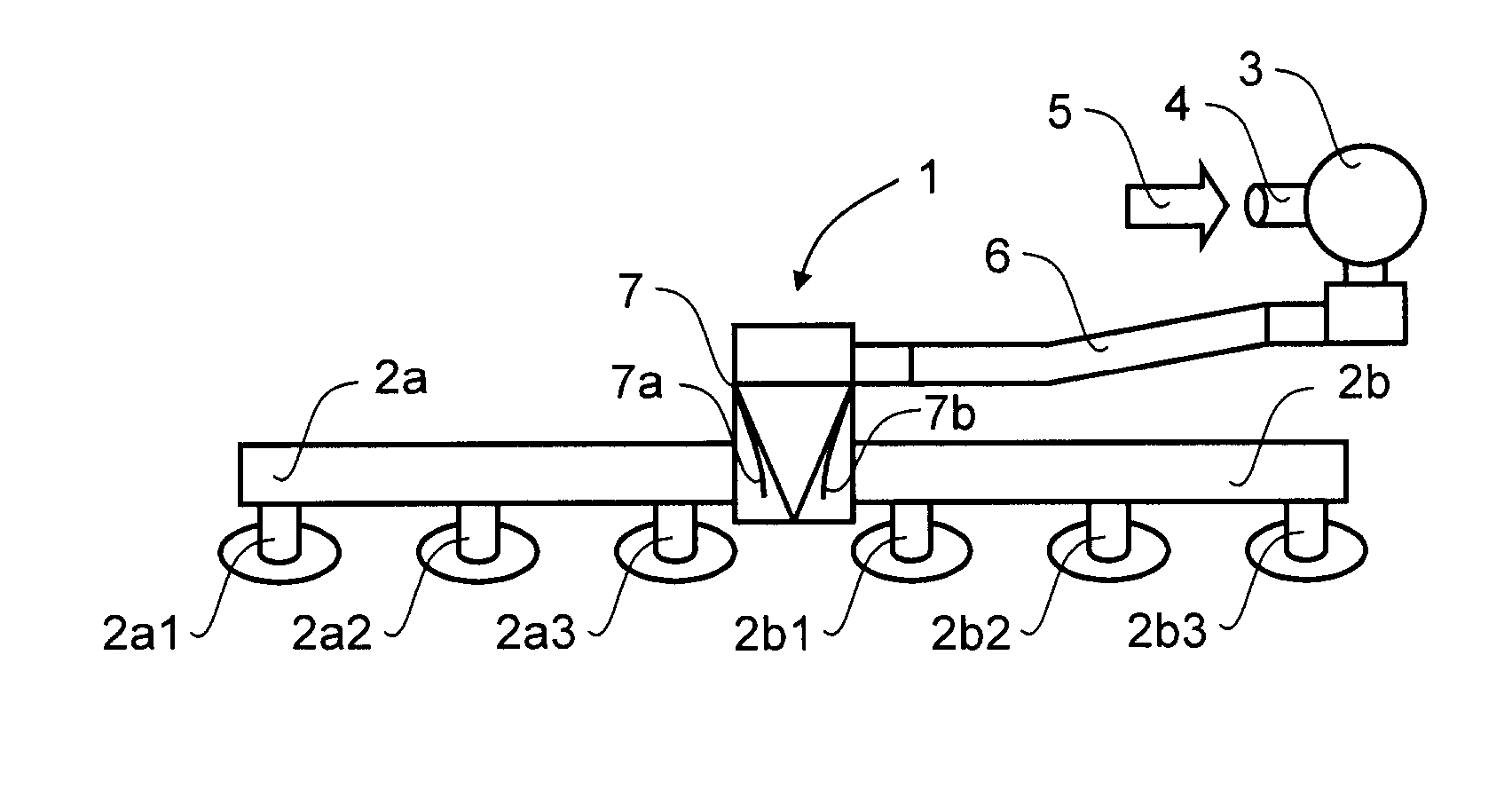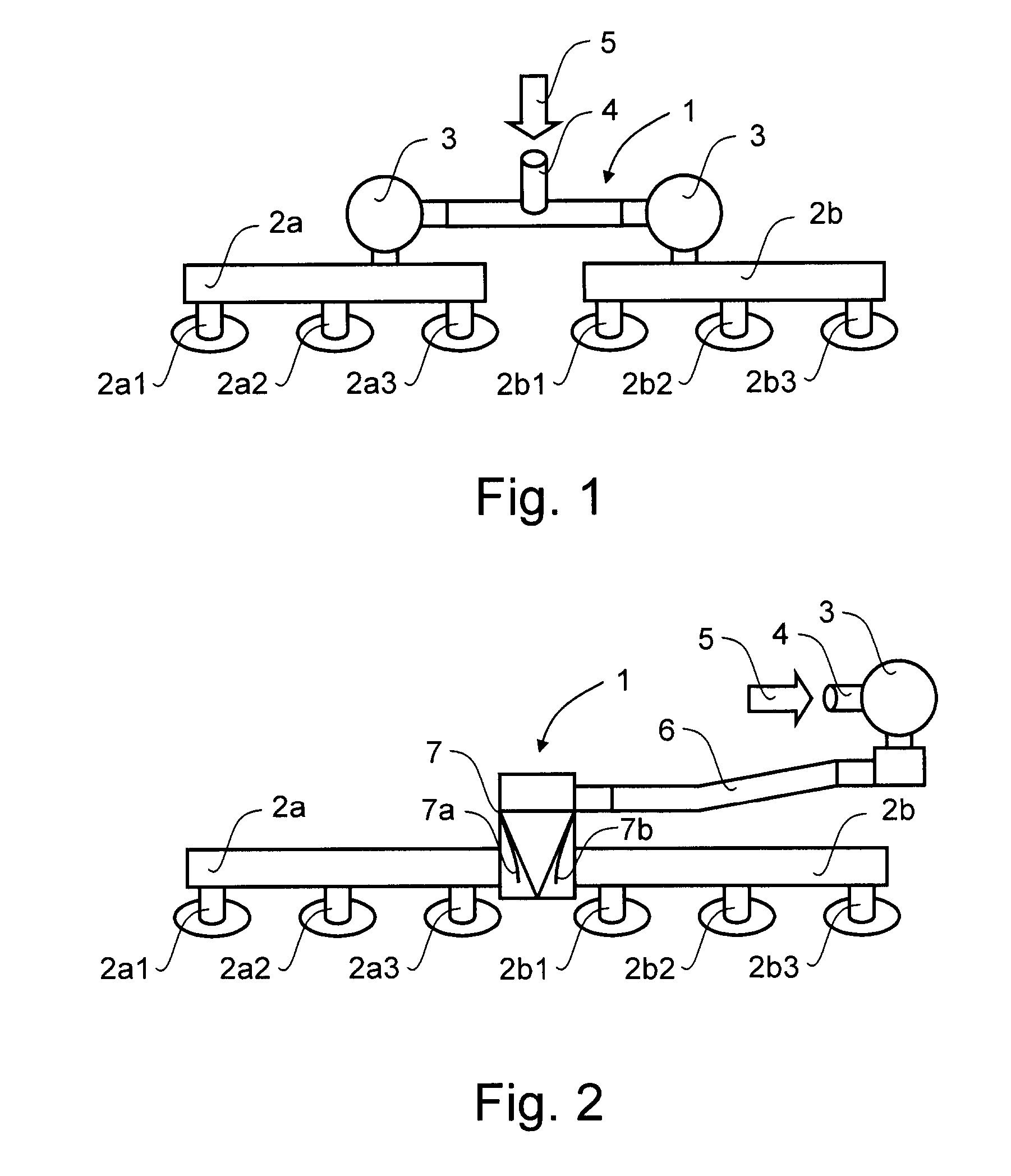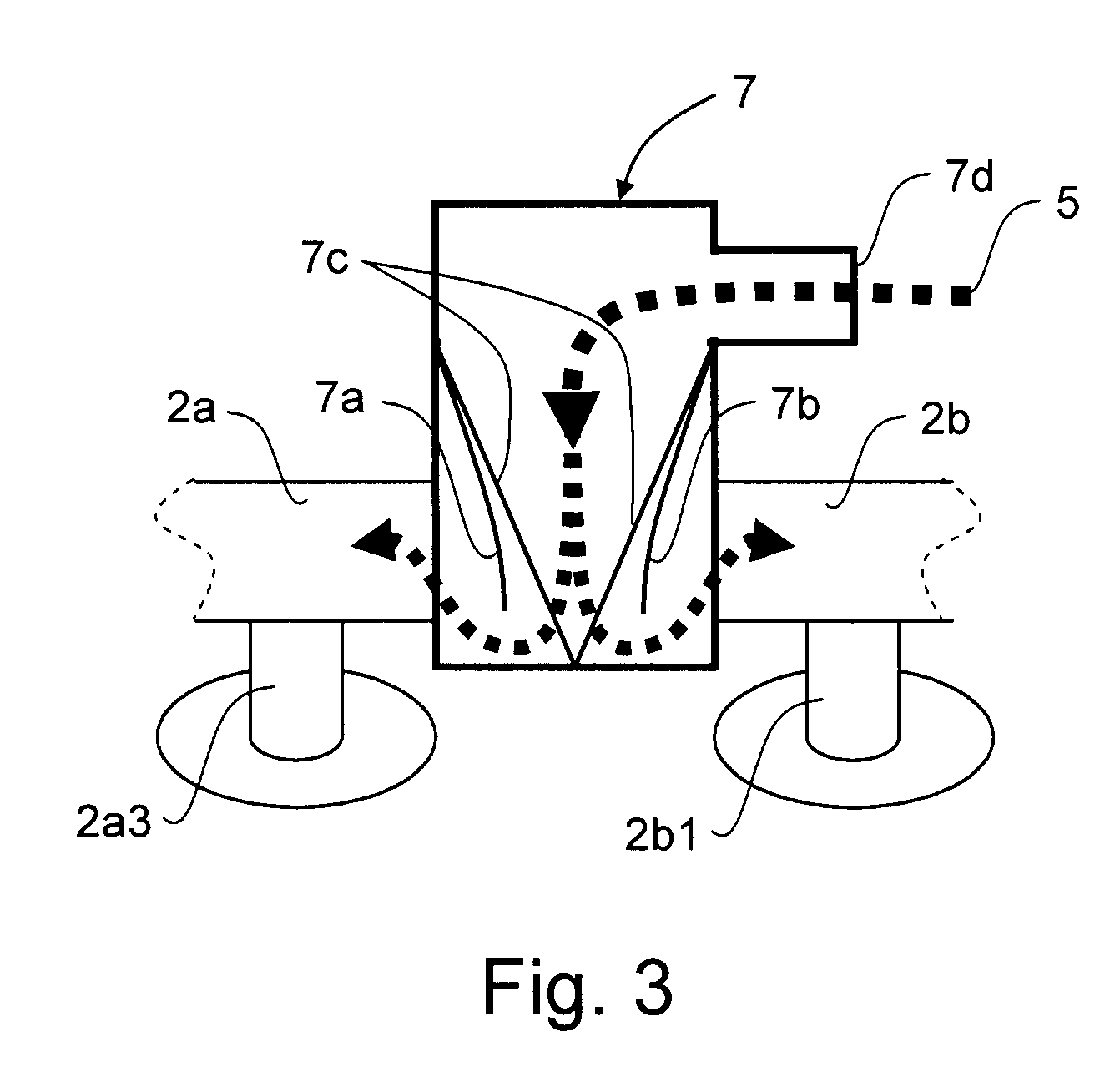Secondary air injection system for an internal combustion engine
a technology of air injection system and internal combustion engine, which is applied in the direction of engine components, machines/engines, mechanical equipment, etc., can solve the problems of low end torque loss, low efficiency, cost and complexity, and achieve the effect of less costly and complex manufacturing and improved operating characteristics
- Summary
- Abstract
- Description
- Claims
- Application Information
AI Technical Summary
Benefits of technology
Problems solved by technology
Method used
Image
Examples
Embodiment Construction
)
[0024] Referring to FIG. 1, there is illustrated schematically a previously known way of addressing the problem of so-called “breathing” between the cylinders of an internal combustion engine in a secondary air injection system generally designated 1. The proposed solution has been to separate the exhaust banks 2a, 2b of the cylinders (not shown) that are likely to cause this problem and to inject secondary air into the exhaust gas of the respective exhaust banks 2a, 2b separately. In FIG. 1 this is illustrated for a six cylinder engine being provided with two exhaust banks 2a and 2b, serving e.g. cylinders 1-3 and 4-6 through connecting pipes 2a1, 2a2, 2a3 and 2b1, 2b2, 2b3 respectively.
[0025] However, in order to reduce the cost and complexity of such a secondary air injection system 1 usually a common secondary air injection pump (not shown) is used, the air of which, illustrated by arrow 5, is then selectively fed via tubing 4 into the respective exhaust banks 2a, 2b using a r...
PUM
 Login to View More
Login to View More Abstract
Description
Claims
Application Information
 Login to View More
Login to View More - R&D
- Intellectual Property
- Life Sciences
- Materials
- Tech Scout
- Unparalleled Data Quality
- Higher Quality Content
- 60% Fewer Hallucinations
Browse by: Latest US Patents, China's latest patents, Technical Efficacy Thesaurus, Application Domain, Technology Topic, Popular Technical Reports.
© 2025 PatSnap. All rights reserved.Legal|Privacy policy|Modern Slavery Act Transparency Statement|Sitemap|About US| Contact US: help@patsnap.com



